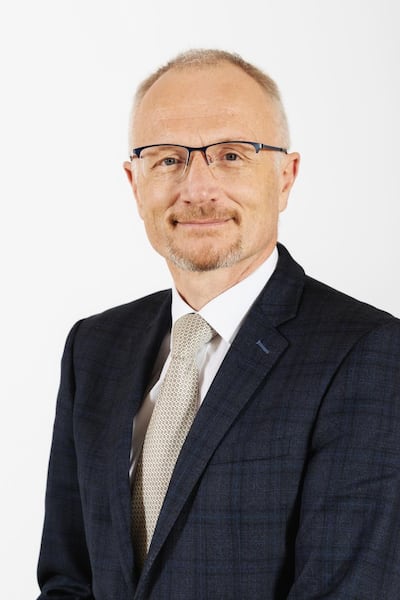Ireland’s pensions landscape is about to undergo some dramatic changes, with the number of defined contribution (DC) schemes being reduced quite drastically. This wave of consolidation will be the product of a fundamental shift in the way pension schemes are structured in this country.
There are now more than 82,000 schemes in existence in Ireland, excluding personal retirement savings accounts (PRSAs). These include more than 70,000 single member plans and about 8,400 group schemes. The Pensions Authority has signalled that it wants to see the number of group schemes cut to between 100 and 150 schemes.
Commenting on the Pensions Authority's 2020 annual report, chief executive Brendan Kennedy said, "Proper supervision and value for money will not be achieved unless there is a much smaller number of larger, more efficient schemes. Consolidation of the number of DC schemes is fundamental to improving the Irish pension system and is a goal of the authority."
And the main lever being utilised by the Pensions Authority to achieve that goal is the occupational retirement provision II (IORP II) directive, which imposes significantly enhanced levels of governance and compliance for trustees and additional cost for sponsoring employers.

"Designed to introduce higher standards in pension provision and ensure increased protection for pension plan members across Europe, the new regulations will require trustees to meet some new, very particular criteria and accept a very demanding list of additional responsibilities with regard to how pension plans are run, how they are structured, resourced, governed and how they communicate with members," explains Shane O'Farrell, director of products at Irish Life Corporate Business.
Increasing burdens and costs
Derek Hunter, head of retirement businesses in Ireland and Northern Ireland at Willis Towers Watson says, "It is not an overstatement to say this is the most significant change in the regulatory framework for pension plans in a generation, and it substantially increases the compliance burden for pension plans.
“It touches on all aspects of running a pension plan and… at a very high level, it introduces onerous requirements regarding governance, including a long list of policies and procedures that must be developed and regularly reviewed, two additional advisory roles, additional supervisory powers for the regulator, and minimum experience and qualification requirements for the trustee boards.”

Caitriona MacGuinness, partner and DC leader at Mercer Ireland, agrees. "Overall, schemes need to have effective governance and internal control systems in place, alongside a focus on providing evidence of this with clear policies and procedures. In addition to setting out these requirements, the Pensions Authority has been clear that they will evolve their oversight regime, with a much greater focus in future on supervision, as well as looking for evidence of compliance across the board."
Leaving the old behind
Many smaller schemes such as defined contribution and defined benefit schemes will soon become inviable due to the increased regulatory requirements. Hunter says: “Employers with smaller defined benefit plans have borne a lot of financial pain over the last decade as they sought to honour promises they made many years ago under their defined benefit plans.
“To date there has been very little evidence of proportionality in the new requirements so all pension plans will have to bear a very substantial additional cost of compliance. While larger plans might be able to absorb this cost, that is unlikely to be the case for many smaller defined benefit plans and these employers will be forced to consider dissolving their defined benefit pension plans.”
Master trust
A master trust is a single trust that employers can participate in, says O’Farrell. “Master trusts are seen by many simply as a solution to the ‘problem’ of IORP II compliance, and the cost implications that go hand in hand with that.
“Although master trusts do indeed offer a solution to many that ticks both the boxes of one: compliance with IORP II and two: negating the associated financial burdens of meeting the new requirements, it really isn’t just about the costs.”
He explains what happens when a plan transfers to a master trust. “If a plan decides to transfer to a master trust, there is a process to follow with a few key steps. The main task on the employer’s and trustee’s side is the initial paperwork – namely the transfer agreement and participating employer agreement. The other steps (the member communications, transfer, fund mapping, old scheme wind-up etc) should largely be taken care of by the pension provider.”
“Because each employer has its own individual pension plan in the master trust, the employer has full control over benefit design,” says MacGuinness. “Employers can apply different contribution rates and benefits approaches, focusing on their specific membership needs and communications agenda. And further economies of scale are created by the shared administration and investment arrangements established for the trust as a whole.”
Looking for guidance
Hunter says that while there have been some master trusts around for a while, “the Irish regulator is quite clear that it did not view previous versions as fit for purpose. We have to look, therefore, to markets where master trusts have been more developed.”
Having investigated how master trusts were run in the UK, the Netherlands and Belgium, it was found that members there benefitted from the "latest and very sophisticated investment approaches [that was] packaged in a way that is accessible to members". Also, charges were lower as a result of scale and members had a better experience.
Next steps
“Now that the legislation is in place, the first step for schemes is to consider a plan of action and, in many cases, to undertake a comparative analysis of maintaining a standalone trust or considering a master trust,” says MacGuinness.
“If a decision is made to move to a master trust, there are set actions to be taken to secure the benefits for members and to ensure member interests are considered as an integral part of the process as well as providing them with the opportunity to engage in the process.”










